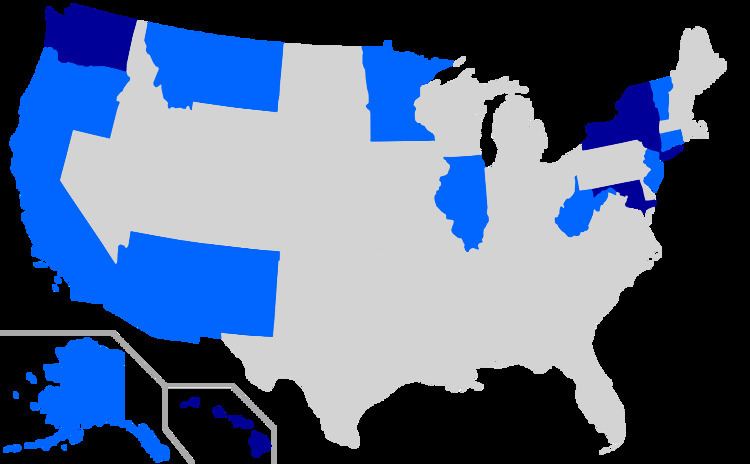 | ||
In U.S. politics, the Hyde Amendment is a legislative provision barring the use of certain federal funds to pay for abortion except to save the life of the woman, or if the pregnancy arises from incest or rape. Legislation including the Hyde Amendment generally only restricts the use of funds allocated for the Department of Health and Human Services and primarily affects Medicaid.
Contents
The original Hyde Amendment was passed on September 30, 1976 by the House of Representatives, by a 207-167 vote. It was named for its chief sponsor, Republican Congressman Henry Hyde of Illinois. The measure was the first major legislative success by the United States pro-life movement, especially the National Committee for a Human Life Amendment led by lobbyist Mark Gallagher, after the striking-down of anti-abortion laws following the 1973 Supreme Court case Roe v. Wade. Congress subsequently altered the Hyde Amendment several times. The version in force from 1981 until 1993 prohibited the use of federal funds for abortions “except where the life of the mother would be endangered if the fetus were carried to term.”
On October 22, 1993, President Clinton signed into law the Departments of Labor, Health and Human Services, and Education, and Related Agencies Appropriations Act, 1994. The Act contained a new version of the Hyde Amendment that expanded the category of abortions for which federal funds are available under Medicaid to include cases of rape and incest.
The 2016 platform marked the first time the Democratic platform had an explicit call to repeal the Hyde Amendment.
Example text
Although the exact language of the Hyde Amendment has changed over the years, the 2014 appropriations bill for the Departments of Labor, Health and Human Services, and Education contained the following limitations on federal spending for abortion that is typical of Hyde Amendment language generally:
SEC. 301. (a) None of the funds appropriated in this Act, and none of the funds in any trust fund to which funds are appropriated in this Act, shall be expended for any abortion. (b) None of the funds appropriated in this Act, and none of the funds in any trust fund to which funds are appropriated in this Act, shall be expended for health benefits coverage that includes coverage of abortion....
SEC. 302 The limitations established in the preceding section shall not apply to an abortion— (1) if the pregnancy is the result of an act of rape or incest; or (2) in the case where a woman suffers from a physical disorder, physical injury, or physical illness, including a life endangering physical condition caused by or arising from the pregnancy itself, that would, as certified by a physician, place the woman in danger of death unless an abortion is performed.
State actions
The cutoff of federal Medicaid funds prompted some states to provide public funding for abortion services from their own coffers. Over time the number of states doing so has gradually expanded, either through legislation or consequent to judicial rulings mandating equal access to health care for low-income women.
Related laws
The Stupak–Pitts Amendment, an amendment to the Affordable Health Care for America Act, was introduced by Democratic Rep. Bart Stupak of Michigan. It prohibits use of Federal funds "to pay for any abortion or to cover any part of the costs of any health plan that includes coverage of abortion" except in cases of rape, incest or danger to the life of the mother, and was included in the bill as passed by the House of Representatives on November 7, 2009. However, the Senate bill passed by the House on March 21, 2010 did not contain that Hyde Amendment language. As part of an agreement between Rep. Stupak and President Obama to secure Stupak's vote, the President issued Executive Order 13535 on March 24, 2010 affirming that the Hyde Amendment would extend to the new bill.
